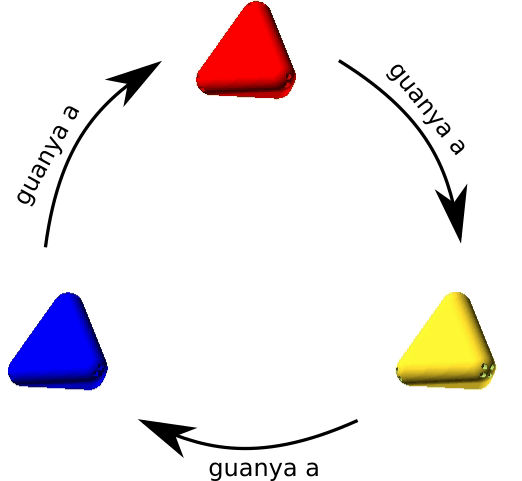Which dice wins?
Which dice wins?
Look at the points of these tetrahedral dice.
- Red has scores 5, 5, 2 and 2
- Yellow has scores 4, 4, 4 and 1
- And blue has scores 6, 3, 3 and 3
Quin dau convé agafar?
Fes la teva hipòtesi abans d’experimentar.
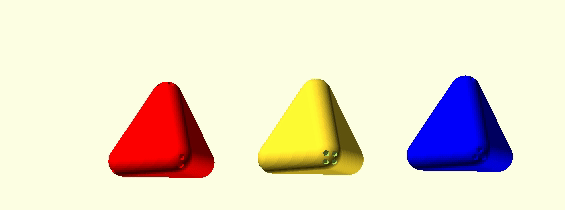
- Location: Sala Santaló
- Minimum age: from 10 years old.
- Time required: 10 minutes.
- Number of participants: One or more people
- Keywords: Relationships, sorting, tetrahedron, counting
- Taxonomy: Probabilities and statistics
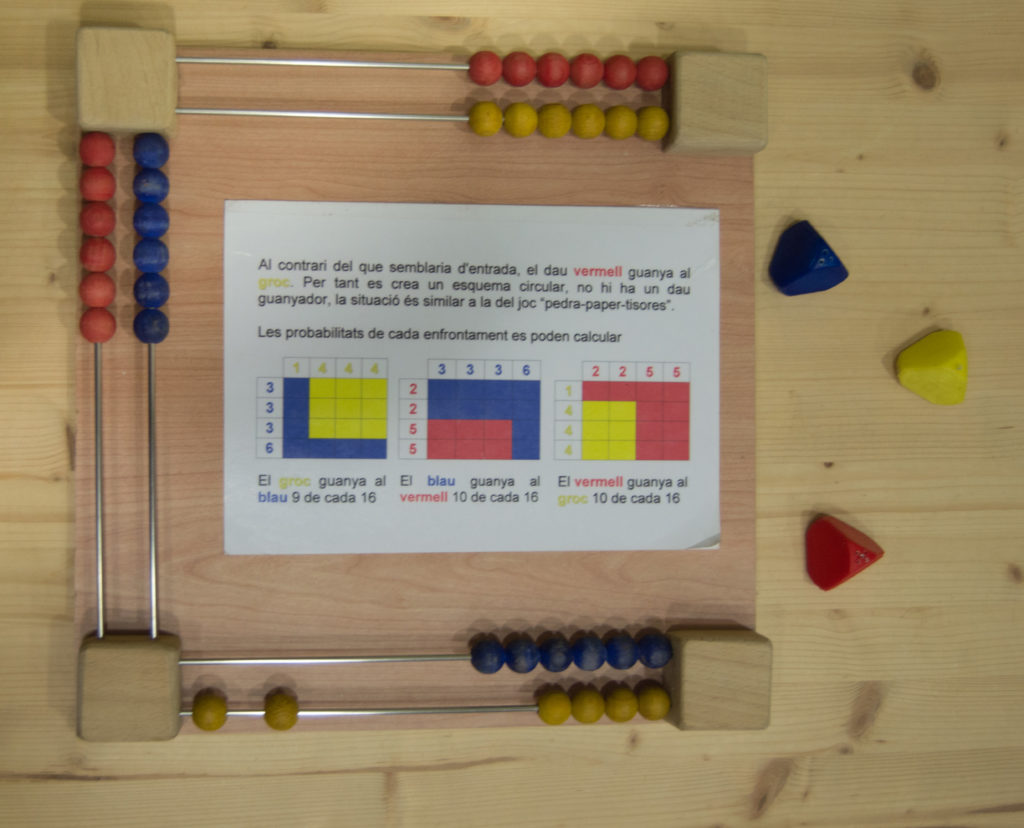
Red vs. Yellow
Let's start, for example with red versus yellow. Make a few runs, write down the results with the balls. If you throw enough hits you will see that the red dice wins more times.
Since the dice have 4 faces, the possible confrontations are 4 x 4 =16, as the grid shows, of these 10 wins the red and 6 the yellow.
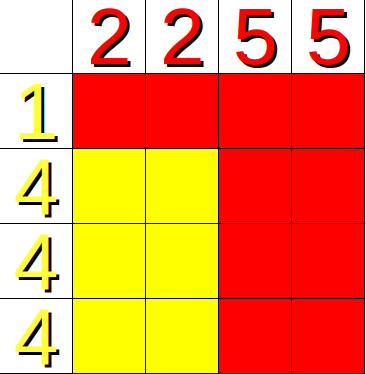
Red vs. Blue
Make a few runs, write down the results with the balls. If you throw enough hits you will see that the blue die wins more times.
Now of the 16 confrontations there are 10 where the blue wins and 6 the red.
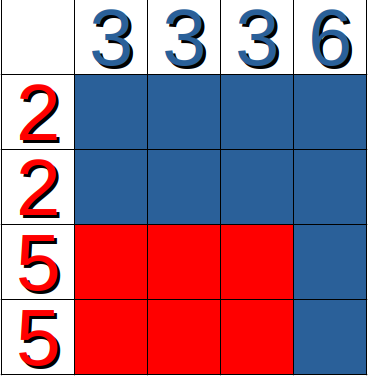
Yellow vs. Blue
And finally with yellow and blue, make a few runs, score the results with the balls. If you throw enough hits you will see that the yellow die wins more times.
Now of the 16 confrontations there are 9 where yellow wins and 7 blue.
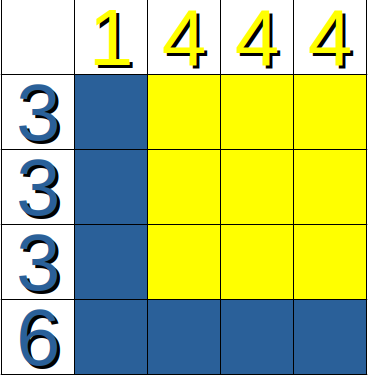
There is no winner, it is an intransitive relationship
In short, there is no absolute winner, it is a situation similar to the stone-paper-scissors game, or the 3-box module.
These relations are called intransitive unlike transitive relationships such as the order relation that is established with the numbering where: if the number A is smaller than B and B is smaller than C we can assure that A is smaller than C (the relationship has "passed" through B).
